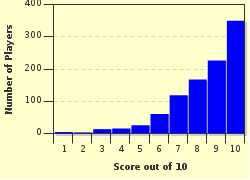Quiz Answer Key and Fun Facts
1. The book of Revelation consists of a series of visions received by its writer, John, whilst on the island of Patmos. It was written for Christians facing a challenging situation. Which one of these famous speeches comes closest to sharing the same setting?
2. Numerical symbolism is very evident in Revelation. Which of these numbers is a recurring motif through the book?
3. First, John sees a vision of Jesus in risen glory. Jesus has messages for the churches of Ephesus, Smyrna, Pergamum, Thyatira, Sardis, Philadelphia and Laodicea. In which modern-day country are all of these located?
4. John is then invited into the throne room of heaven to be shown a sequence of future events. He sees a scroll, in which this information is recorded, that can only be opened by somebody sufficiently worthy. Which animal opens the scroll and its seals?
5. As the seals are opened, John sees various troubles inflicted upon the earth. Which of these is not among them?
6. As the visions continue, John sees several characters that oppose the people of God. He lists Satan, here pictured as a serpent or dragon, and three earthly entities. These comprise a beast; a false prophet and a prostitute. The name of which ancient city, familiar from the Old Testament, is also associated with their opposition?
7. The beast and the false prophet have the power to oppress and also deceive the people of the world. They force everyone to wear a special mark on their right hand, or which other part of their anatomy?
8. The beast and false prophet gather together the kings of the earth to fight against a heavenly army led by Jesus, this time portrayed as a rider on a white horse. Where does this battle take place?
9. Revelation ends with God and his people victorious. The closing chapters describe the "new heaven and earth", come down from heaven to replace the old. How is the Holy City, the "new Jerusalem", described?
10. "Then the angel showed me the river of the water of life, as clear as crystal, flowing from the throne of God and of the Lamb down the middle of the great street of the city. On each side of the river stood the tree of life, bearing twelve crops of fruit, yielding its fruit every month. And the leaves of the tree are for the healing of the nations." (Revelation 22 v. 1-3)
Just as the book of Revelation cannot be read without a knowledge of numerology, neither can it be understood without reference to the Old Testament to which it frequently alludes. In which Old Testament book would you find the original vision upon which these verses are based?
Source: Author
glendathecat
This quiz was reviewed by FunTrivia editor
CellarDoor before going online.
Any errors found in FunTrivia content are routinely corrected through our feedback system.

